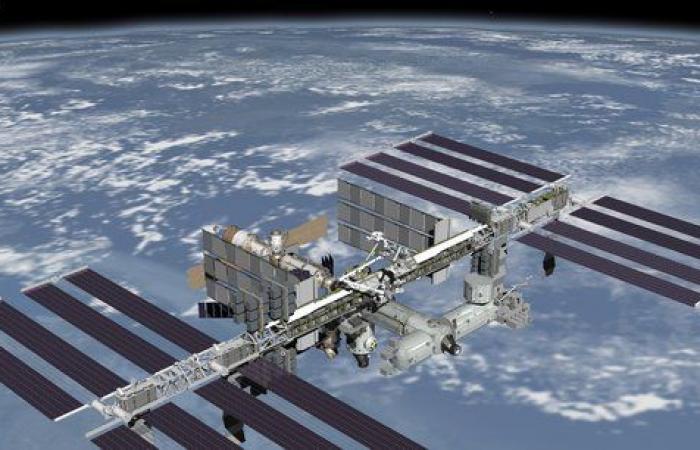From 2030, a part of aerospace history will close. On this date, the ISS, the International Space Station, will be destroyed. To do this, according to the plan established by the American space agency (Nasa), it must dive into the earth’s atmosphere above an ocean, which will allow certain pieces to disintegrate while others, more resistant, will end up in the water. An operation which requires the construction of a vehicle capable of maneuvering the ISS, weighing some 430,000 kg. It must allow “to deorbit the Space Station and avoid any risk for inhabited areas”NASA said on Wednesday, revealing the company chosen to create it.
And it was SpaceX, the company of billionaire Elon Musk, which won the juicy contract, which could go for up to $843 million. Once the vehicle is developed, it will belong to the space agency, which will be responsible for operating it during its mission. Just like the ISS, this vehicle should break up upon re-entering the earth’s atmosphere, as NASA has specified.
The United States takes the lead
A model of international cooperation bringing together Europe, Japan, the United States and Russia, the ISS began to be assembled in 1998, module by module, at a cost of around 100 billion dollars, largely borne by the United States. Located four hours’ flight from Earth, it has been permanently inhabited since November 2, 2000, with an international team of seven astronauts. The teams take turns every four to six months. This space laboratory makes it possible to study the Earth and the solar system, to conduct weightless experiments, particularly in medicine, and to prepare space exploration missions.
SpaceX: a new crew took off for the International Space Station
Its end of life is anticipated now given the technical nature of the subject. But also the geopolitical context. Since the war in Ukraine, the ISS remains one of the rare sectors of cooperation between the United States and Russia. But nothing can guarantee that this will still be the case in the coming years. This is why NASA boss Bill Nelson stressed in April, during a hearing in the American Congress, the need to develop the said vehicle quickly in the United States.
In six years, “will we always have the same relationship to be able to bring it down (ndlr : l’ISS) with the Russians? We can’t count on that.” he estimated.
A divisive end-of-life date
Points of view also differ on the end of life of the ISS. Its retirement was initially planned for 2024, but NASA estimated that it could operate until 2030. An opinion that the Russian space agency Roscomos does not share. It affirmed, at the end of 2023, that its segment is too obsolete to ensure its continued operation. According to his boss, Yuri Borissov, “80% of Russian equipment has already exceeded all warranty periods” allowing them to remain in service. So, “the International Space Station is nearing the end of its existence”, he estimated. Several technical problems have also occurred in recent months on the Russian segment of the ISS, including three incidents involving leaks.
And if the United States, Japan, Canada and the Europeans have committed to continuing ISS operations until 2030, Russia has only committed until 2028, for now. However, as NASA recalled this Wednesday, “Safely removing the International Space Station from orbit is the responsibility of all five space agencies.” A departure from Russia earlier than the others would force the Americans to take sole responsibility for refueling and maintaining the station in orbit, which is constantly approaching Earth.
Space conquest: China sends its youngest astronauts into space
The future is now taking shape
For the future, after 2030, the United States is banking on private space stations in low Earth orbit, which could accommodate NASA astronauts as well as other clients. Several American companies are already working on these projects, including Axiom Space and Blue Origin. Same on the European side. The European Space Agency (ESA) notably concluded an agreement with Airbus and Voyager Space, which are building and operating the Starlab private space station, paving the way for the presence of European astronauts in space.
For its part, Russia has the ambition to relaunch itself in the space race. To do this, it plans to build a new orbital station and is targeting 2027 for its first segment to be put into orbit. The fact remains that while the Russian space sector has historically been the pride of the country, it has suffered for years from funding problems, corruption scandals and setbacks. Which could compromise his future.
(With AFP)






